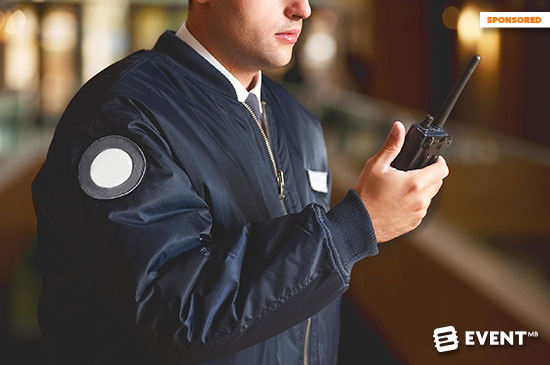Skift Take
On top of everything else a busy event planner has to think about, a key logistical hurdle to overcome is - how do you keep everyone in communication come the big day?
This is a sponsored post written by James Miller, Managing Director with Brentwood Communications. More information about Event Manager Blog’s sponsored posts.
Two way radio has been the saviour of many a hard pressed organiser over the years. Versatile, reliable, robust and, crucially, mobile, the good old ‘walkie talkie’ provides that critical communications link you need to keep a busy event on track.
And with security front of mind for every eventprof, especially following recent tragic events, modern digital two way radios also come packed with safety and alert features such as emergency alarm buttons and remote lone worker monitoring which provide that added peace of mind in an emergency. Should you suffer a bomb scare at your event, for example, two way radio can still be used to coordinate evacuation, unlike mobile phones.
However, like most tech solutions, handheld radio by itself is no panacea. Especially when you are new to the world of event radio, a few basic errors can see your carefully honed coordination plans come tumbling down.
Here are six of the most common mistakes made when using two way radio at events, and how to avoid them.
##abovethefold##
1. Which Button Do I Press?
One of the big attractions of two way radio is that it is pretty simple to use – just push a button and talk, basically. However, modern digital handsets come with a fair few more knobs, buttons and features than they once did, so don’t assume staff and volunteers will know which button to press to scan for an available channel. Choose a model which suits the confidence of your team. and at the very least, have a run through beforehand to brief your staff and volunteers.
2. Too Quiet, Too Loud
A classic problem at large, noisy events is that no one can hear dispatches because there is so much background noise. Just as bad is having the volume cranked to max during a keynote speech – the whole room will hear whatever is broadcast. Again, make time to have a run through to check volume settings, or choose a digital model with intelligent audio, which automatically adjusts it for you. You can also add accessories such as headsets and earpieces, which nowadays can connect wirelessly to a handset via Bluetooth. As well as improving audibility, these also free up your hands so you can carry on doing other things as you talk.
3. Channel Babble
Most two way radios nowadays have different channels, which are like separate lines on a telephone system. Some digital models offer thousands. In that case, there is no point in all of your teams – security, catering, front of house – competing with each other on the same channel, it will just end up in utter confusion. Assign different channels to different teams before the event starts, and set aside a dedicated emergency channel so you know there is always one free when you most need it.
4. Out of Juice
You’ve just done 10 hours on the first day of an exhibition, everyone is buzzing with excitement but tired and in a rush to get back to the hotel. Next day, two hours in, all of the two way radios start to lose power – no one thought to plug them in to charge the night before. Make sure jobs like that are clearly allocated, choose models with extended battery life options, and most importantly, always have spare battery packs, just in case.
5. Lack of Call Etiquette
Ever wondered why people say things like ‘Roger’ and ‘over and out’ when using walkie talkies in the films? Traditionally, unlike telephones, two way radios do not allow you to talk and listen at the same time – as soon as you press the button to talk, you cut off the audio coming in. Without the appropriate turn taking, this too can lead to chaos. Saying ‘over’ when you have finished speaking lets people know you are no longer pressing the talk button and that you are ready to listen. ‘Roger’ confirms you have heard and understood a message, while ‘copy’ or ‘read’ are used to check someone else has understood. If you don’t have time to practice, an alternative fix is to opt for so-called duplex models, which do allow you to speak and listen at the same time.
Another point to bear in mind about call etiquette is what you say and to whom. Unless you use a two way radio model which supports private calling, all communications are broadcast over an open channel, therefore anyone tuned into that channel can hear what you say. This can cause huge embarrassment if you are not careful with what you say. Also bear in mind that certain license types are not completely secure, and what you say could be picked up by external radio users. In that case, avoid sharing sensitive information via radio.
6. Where Have They Gone?
A common mistake, particularly with large two way radio fleets, is handsets being misplaced and going missing. Make sure you have a robust checking in and checking out procedure to guard against this. Also, it is very easy for users to wander off site and out of range of other users, whether intentionally or not. This can cause a lot of confusion if other users need to get hold of someone in a hurry, so make sure everyone knows where the coverage boundaries for the network are, and have protocols in place for alerting colleagues when someone does want to go offsite. For very large events, it is helpful to set up a central control room where availability can be monitored. The very latest digital models even support GPS tracking, so controllers can see exactly where radio users are.
In Conclusion
Eventprofs know that the bigger an event is, the harder it is to get communication right. Organisers turn to two way radio because it always delivers. Indoors and out, venues big and small, when you absolutely have to make sure everyone stays in touch, two way radio is the most reliable option there is. But a tool is only as good as the person using it, so it pays to make sure you get the set up and organisation right so you get the best from your event radio experience.






